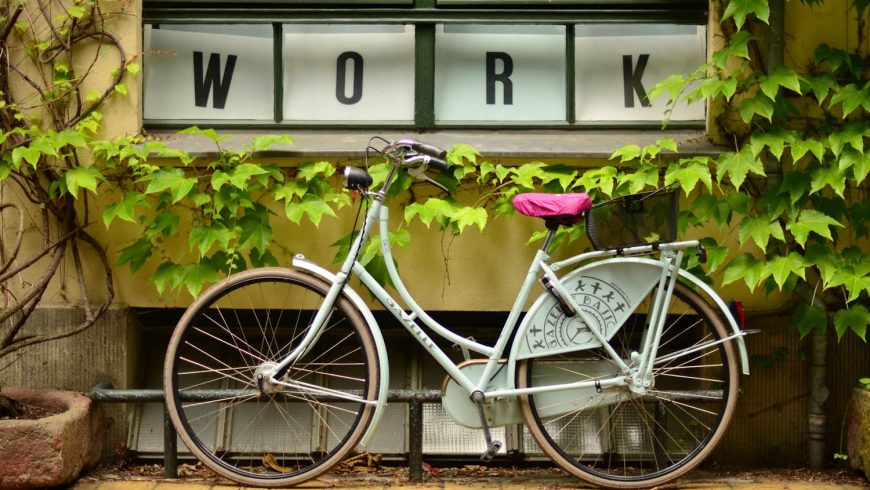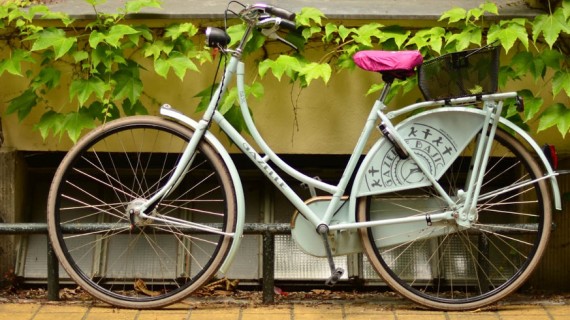Longer days make daily work commutes (somewhat) more palatable, you might just want to invest in a bike and start cycling to and from the office. Not only will the extra time outside help clear your mind after long hours in the office, it just might be the antidote you need to the mounting detriments of your pesky desk job. Specifically, you might boost markers of health while dropping inches from your waistline.
The Pitfalls of Commuting to Work by Car

Anyone who’s ever spent 10 minutes (or more!) in stop-and-go traffic knows that commuting is no picnic. It’s stressful and life-sucking, and frankly feels like a giant waste of time – aren’t there a million other things you’d rather be doing?
Overweight
Unfortunately for many people it’s assumed to be a necessary evil – one that can lead to serious health problems. In fact, those who commuted to work by car rather than other means (walking or cycling) gained significantly more weight than those who didn’t commute by car, even when car commuters engaged in physical activity during their leisure time.
In other words, your 30 minute commute to and from work may still contribute to weight gain, even if you regularly hit the gym. Bummer, right?
Physical Health
It’s not just physical health that can suffer, though. Women with longer commutes are more likely to experience adverse effects on mental health than those with shorter commutes. Guys got off lucky in the particular study, as their mental health didn’t take the same nosedive.
General Well-Being
Finally, all that time spent on the road cuts into time you could be spending on other, healthier activities. In fact, 60 minutes spent on the road is associated with a 6-percent decrease in total health-related activities, and if you have a longer commute? That percentage keeps rising. The main health-related activities that take a major hit include sleep, exercise and food preparation – you know, the same things that play a major role in staving off chronic illnesses, including obesity, cardiovascular disease and type 2 diabetes.
How a Bike Commute Can Help

It should come as no surprise that if you switch your 10 mile drive to and from work for a 10 mile bike ride, you’re going to experience a few health-related benefits. For one, you’re essentially building exercise into your day, making it a requirement rather than something you try to eke into your mornings or evenings around all the other must-dos on your long list of obligations.
Increase in Physical Activity
In fact, bicycle commuters averaged 2.1 more hours of physical activity each week than their motorized-commuter counterparts. Plus, they averages more than three hours of cycling per week (that sounds like a lot, but it breaks down to roughly 36-minutes per day – less than the average American daily commute by car), which is well over the American Heart Association’s recommendation that adults accumulate at least 150 minutes of moderate-intensity physical activity per week.
In other words, if you can cycle to and from work each day, you might have a much better chance of hitting your health-related activity goals than if you spend your time in a car. Not to mention the heart-related health benefits. Active commuters (cycling or walking) had an 11-percent reduction in cardiovascular risk – a reduction that was more pronounced in women than in men.
It’s Not as Dangerous as You Think

Now before you start protesting that the roads are dangerous for cyclists and only those with a death wish would try it, let me stop you right there. Bike commuting is actually not as risky as you think, and the more people who take up cycling to work, and the more cities adjust their infrastructures to support cyclists, the less dangerous an active commute becomes.
So while cycling accidents do take place, often resulting in broken bones, the overall health benefit is much greater.
How to Get Started

Do you remember biking to school as a kid? It wasn’t rocket science – you had a basic bike, the clothes on your back, a helmet (if your parents made you wear one) and a bike lock. That was pretty much it.
Biking to work really isn’t all that different. The distance may be a bit longer, and you may be wearing nicer clothes, but all-in-all, it’s not as hard as you may think.
A solid commuter bicycle – even a used or refurbished one – is a great place to start. If you’ll be riding at dawn or dusk, make sure you have a headlight and taillight for visibility, and a helmet is definitely a must.
You’ll want to scope out bike racks or storage solutions to keep your bike safe while at work, which likely means you’ll need a lock.
As far as clothing and other supplies, that really comes down to your own preferences and needs. A solid water-resistant messenger bag can keep your computer and other work supplies safe and dry, while mud flaps on your tires can help keep your clothes clean. You may also want a pannier bag to store the change clothes, work shoes and repair supplies, just in case you need them.
Cover image: Photo by Coen van den Broek on Unsplash





